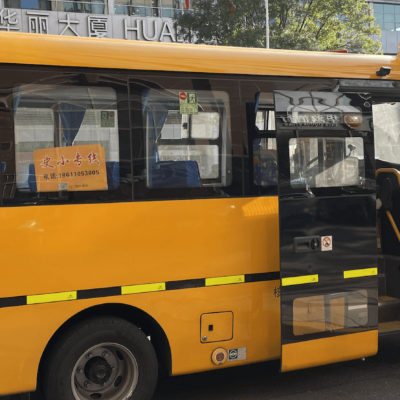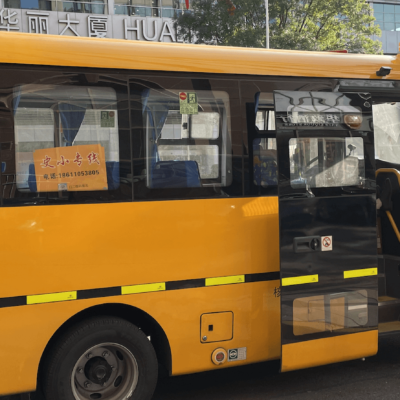“Language is intrinsic to all expressions of life; it is important for communicating our values, our beliefs, our customs; it tells us and guides us in our social function and fosters feelings of our group identity and our solidarity together. All of that has cracks in it because of not being allowed to speak it.” Dr Aunty Caroline Hughes AM, Ngunnawal language leader.
Language diversity, marginalisation and loss
Globally, around half of the world’s 7,000 languages are endangered, and 3,000 of these languages face extinction, according to UNESCO. This underscores the scale of the problem and the urgent need for intervention.
Asia, with its estimated 2,300 languages spoken, is no exception. Many of these languages are in precarious positions as national policies prioritise dominant languages over regional or minoritised languages. The situation of Indigenous languages in Australia (where we are based) is also critical. According to the National Indigenous Languages Report (2020), over 250 Indigenous languages were spoken at the time of colonisation in Australia. However, the 2016 Census identified approximately 159 Indigenous languages in use today, and alarmingly all are under threat of loss.
The legacy of colonialism is a key part of this dynamic. For example, British colonisation in Asia established English as the administrative, educational, and commercial language in former colonies such as India, Singapore, and Hong Kong, laying the groundwork for its enduring global dominance. Colonialism imposed English as a tool of governance and cultural assimilation has led to marginalisation of local languages. In addition, many Asian nations have adopted language policies that promote dominant languages for their advancement and heightened sense of national identity to bring diverse communities together and to enhance citizens’ literacy levels. But this has resulted in the marginalisation of minority groups’ community languages.
Consequences of language endangerment and loss
While language change and shift are natural processes of cultural evolution, the current rapid loss of linguistic diversity is massively accelerated by colonisation, nationalism, and globalisation. Languages are not only means of communication, but they also serve as fundamental pillars of cultural identity and social cohesion. Multilingualism is also beneficial for cognitive functioning and enhances our capacity to navigate complex social situations.
Language diversity gives people pride in their identity and culture, and brings people together instead of dividing them. When Indigenous or minority languages disappear, communities lose repositories of centuries of knowledge and a unique window into their past cultural heritage and values.
This loss carries profound educational consequences too. It disrupts the intergenerational transmission of knowledge, weakening community bonds, and contributing to a broader cultural impoverishment that diminishes the richness of our shared global heritage. According to a UNESCO policy paper, teaching children in a language other than their mother tongue compromises their ability to learn foundational concepts in literacy and numeracy. With up to 40 percent of the global population lacking access to education in a language they fully understand, these barriers exacerbate learning gaps, deepen poverty, and perpetuate cycles of marginalisation.
In this edition, our contributors highlight challenges faced by communities across Asia. They shed light on often-overlooked linguistic diversity within Asian nations and examine both the factors that accelerate marginalisation and those that foster revitalisation.
Trang Thi Thuy Nguyen examines the impact of linguistic colonialism in Vietnam, where ethnic minority students (e.g., from the Jarai community) face systemic marginalisation under an education system that prioritises the Vietnamese language. In Sri Lanka, Romola Rassool analyses how state language policies, exemplified by constitutional and census omissions, marginalise minority tongues and, by extension, disrupt ethnic harmony and cultural preservation.
Similarly, Yancheng He and Yongxian Luo examine the decline of China’s endangered Gelao language. Their work traces Gelao’s decline to a combination of cultural and linguistic assimilation, economic pressures, and education policies that favour the national language of Mandarin. They also highlight promising preservation initiatives, ranging from extensive fieldwork and community language programs to efforts in compiling comprehensive dictionaries, to revitalize this unique linguistic heritage. Furthermore, Ziba Akbari highlights the situation of the Kurdish people in the Middle East, who, without a Kurdish state, face systemic suppression across borders. She also demonstrates how this marginalisation fractures Kurdish dialects and severely undermines cultural survival and identity.
Language revitalisation: Efforts and challenges for justice
In the face of such profound loss of linguistic diversity, there is a growing global movement to revitalise endangered languages. Initiatives such as the International Decade of Indigenous Languages (2022–2032) aim to recognise and protect languages as vital cultural heritage. These efforts are a call to not only preserve linguistic diversity but also to address the social and educational inequities that accompany language loss and endangerment.
Revitalisation efforts are multifaceted. In the Middle East, for instance, Farangis Ghaderi explores literary and cultural activism in Kurdish. Her article documents efforts that span broadcasting, music, theatre, cinema, and academic initiatives, and emphasizes the emerging and important role of digital activism in creating a visible and vibrant cultural space for Kurdish speakers.
Eri Kurniawan and Michael Ewing examine this phenomenon in the Baduy community in Indonesia, highlighting the challenges posed by modern influences such as increased tourism, greater contact with mainstream Indonesian society, and external governmental pressures. They also showcase the successes of targeted revitalisation projects, including collaborative language documentation and innovative media initiatives, in preserving the distinctive Baduy language.
In China, the tension between national unity and linguistic diversity is particularly acute. Tim Thurston shows that while state-backed cultural heritage projects, such as the promotion of Gesar epic, create a visible space for Tibetan cultural traditions, they do little to support the everyday use and maintenance of the Tibetan language. Similarly, Alexandra Grey discusses how China’s evolving language policies reflect contradictory priorities: while the government increasingly promotes Mandarin to bolster national unity and economic integration, government initiatives such as the ‘Yubao’ (语保) project serve mainly to archive minority languages rather than foster their everyday use. Both these cases illustrate the tension between the nominal preservation of linguistic diversity and the underlying pursuit of linguistic homogenisation.
In Japan, the challenges of language revitalisation are equally pressing. Jeffry Gayman and Saana Santalahti critique Japan’s policies toward the Ainu cultural and linguistic heritage. They argue that while there are efforts to promote an “idealised awareness” of Ainu culture, these efforts fall short of addressing systemic issues—ranging from the colonial history of the northern island of Hokkaido to the lack of substantive language support and rights. They call for genuine recognition and structural reform.
Across diasporic communities, language maintenance also emerges as a critical strategy for cultural resilience. In multicultural Australia, for instance, Miyako Matsui and Kaya Oriyama address an underexplored aspect of community language maintenance in their discussion of fathers’ roles in the intergenerational transmission of Japanese. Through case studies of intermarriage families, the authors present a complex picture of family language practice and language ideologies. They argue that parental agency plays an important role in language maintenance, but this should be combined with societal and institutional support.
The battle for linguistic revitalisation is ultimately a struggle for social justice. Language loss is inextricably tied to historical injustices and systemic discrimination that continue to marginalise Indigenous peoples. By centering multilingual education and multilingualism, community-led revitalisation, and equitable resource allocation, we can dismantle the oppressive structures that have endangered countless languages and ensure that linguistic diversity remains a celebrated cornerstone of global social justice.
Conclusion
This edition examines the crisis of linguistic diversity and revitalisation efforts in Asia from multiple angles. Whether through the lens of endangered Indigenous languages, the marginalisation in educational context in Vietnam, the struggles of minority languages in Sri Lanka, or the complex policy landscapes in China and Japan, the articles in this edition collectively highlight the dynamics of various forces that affect language endangerment and vitality. Some of these forces are results of state control, accelerated flows of migration and advancement in communications technology. The contributions also foreground that language is a vital component of identity, a repository of culture and history, and a key element in the fight for social justice.
In an increasingly globalised world, ensuring that every community can speak its own language is essential for fostering social cohesion, cultural dignity, and true inclusion. The work presented here calls on policymakers, educators, and communities to champion multilingual education, support preservation of heritage languages, and empower the marginalised voices that form the backbone of our diverse global society, ultimately making Asia’s marginalised languages more visible.
Authors: Dr Lajiadou and Professor Ikuko Nakane.
Image: Children playing at a school in Mongolia. Credit: World Bank/Flickr.




